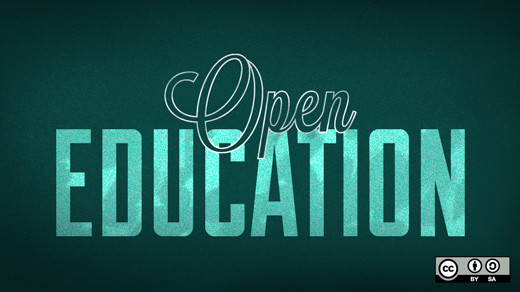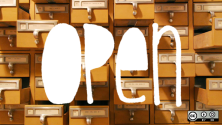The open educational resources (OER) movement has been gaining momentum over the past few years, as educators—from kindergarten classes to graduate schools—turn to free and open source educational content to counter the high cost of textbooks.
Over the past year, the pace has accelerated. In 2017, OERs were a featured topic at the high-profile SXSW EDU Conference and Festival. Also last year, New York State generated a lot of excitement when it made an $8 million investment in developing OERs, with the goal of lowering the costs of college education in the state.
David Usinski, a math and computer science professor and assistant chair of developmental education at the State University of New York's Erie Community College, is an advocate of OER content in the classroom. Before he joined SUNY Erie's staff in 2007, he spent a few years working for the Erie County public school system as a technology staff developer, training teachers how to infuse technology into the classroom.
He quickly realized that technology access was a tremendous barrier to achieving the program's goals. "It became evident that not every student had access to software on their home computers," he says. "This led me to find open source alternatives so that students from lower income families would not fall victim to another economic divide in education."
Once he became a college professor, he discovered a similar problem: "Students not passing my course because they could not afford the textbook or access codes to complete the assignments." Thinking about his success with open source software in the K-12 classroom, he decided to seek out OER content that aligned with his curriculum.
Finding OER materials
At first, David found the options to be limited. He started with MyOpenMath and the Open Learning Initiative, which he learned about at the American Mathematical Association of Two-Year Colleges (AMATYC) national conference.
Today, he says, there's an enormous amount of OER content that educators can tap into. "Now there is an OER option for nearly every high-enrolled course at college, from U.S. history to psychology to sociology to calculus." In addition, there are multiple good options to choose from, not just one or two for each course.
OER Commons is an extensive online library of open, Creative Commons-licensed content that teachers can use to develop lessons, modules, and media-rich documents. The content is searchable by topic, academic subject, education level, and standards (e.g., Common Core), making it easy for educators to find high-quality, free materials to target specific topics or learner needs.
Why OER makes sense
David says OER benefits students, instructors, educational institutions, and even course writers.
Students
Free OER content levels the playing field for students from low-income families who may struggle to afford the high cost of traditional course materials. "In both my online statistics and calculus courses, I have seen a 16% to 18% jump in passing rates. Students have access to all course materials from day one and throughout their education and careers."
Instructors
The ability to customize the curriculum is one of David's favorite benefits of OER. "The intangible aspect is that OER has allowed me to reinvent my curriculum and take ownership of the content. With a textbook, I am locked into the chapter-by-chapter approach by one or two authors," he says. Because of OER "I am no longer hindered or confined by published materials and now have the flexibility to create the curriculum that truly addresses the course outcomes." By freely sharing the content he creates, other instructors can also benefit.
Educational institutions
OERs' low cost is extremely appealing, especially in K-12 education, where local school systems largely foot the bill for textbooks. OER cuts out the middleman (i.e., large textbook manufacturers), freeing school budgets for other needs. David says "even printed copies of OER content are 85% to 90% less expensive" than traditional textbooks—a significant appeal for cash-strapped systems.
Curriculum writers
David is very clear on one point: People who produce OER content should be paid for their work. "I do think that intellectual property should still be financially incentivized. However, instead of involving traditional publishers using unbendable copyright laws, authors should financially rewarded via grants where the end product is Creative Commons licensed," he says. Another model is paying a vendor to develop non-copyrighted modules. This is how New York State developed its Common Core-aligned materials (available at EngageNY.org), which have been used by educators around the world.
A "renaissance for teaching"
David is a believer that OER has created a "renaissance for teaching" as it's upended the educational publishing model, posing "a serious threat to traditional publishers. The new model of grant-funded intellectual property to be distributed under the Creative Commons license is here to stay and is a revolution for faculty and students."







1 Comment